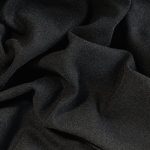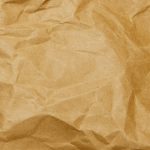If you’re considering jute fabric for clothing, you’ll appreciate its eco-friendly nature—it’s biodegradable, uses less water than cotton, and grows quickly without pesticides. It’s breathable, durable, and offers a unique rustic style. However, jute can feel rough, wrinkle easily, and needs gentle care to avoid mildew. Styling options range from casual tees to statement dresses, often mixed with other fabrics for softness and flair. Keep exploring, and you’ll find practical tips and trendy ideas to make jute work for your wardrobe.
Table of Contents
Key Takeaways
- Jute fabric is a natural, breathable fiber ideal for warm climates, offering durability and a unique rustic charm in clothing.
- It is eco-friendly, biodegradable, requires less water than cotton, and grows without harmful pesticides, supporting sustainable fashion practices.
- Common drawbacks include rough texture, susceptibility to wrinkles and mildew, limited elasticity, and lower durability under heavy wear.
- Care for jute garments by hand washing cold, drying flat away from sunlight, ironing on low heat, and storing in a dry place.
- Stylish options range from casual jute t-shirts and shorts to statement dresses, enhanced by vibrant dyes, prints, and eco-friendly fabric blends.
What Is Jute Fabric?
Jute fabric is a natural fiber made from the stems of the jute plant, commonly grown in warm, humid regions.
Jute fabric comes from the sturdy stems of plants thriving in warm, humid climates.
When you touch jute, you’ll notice its coarse texture, which gives it strength and durability. Unlike cotton or silk, jute’s roughness makes it perfect for sturdy products, including bags and rugs, but it’s also used in clothing, especially casual wear.
You’ll find jute blends combined with softer fibers to improve comfort. It’s breathable and lightweight, which helps when wearing it in warm climates.
However, jute isn’t very elastic, so it won’t stretch much. When you choose jute fabric, you’re opting for a material that balances toughness with natural breathability, offering a unique feel and aesthetic for your wardrobe.
Environmental Benefits of Jute Clothing
Although many fabrics harm the environment, choosing clothing made from jute helps reduce your ecological footprint. Jute is biodegradable, requires less water, and grows quickly without pesticides, making it eco-friendly. When you wear jute, you’re supporting sustainable agriculture and lowering pollution from synthetic fibers.
| Benefit | Explanation |
|---|---|
| Biodegradable | Breaks down naturally, reducing landfill waste |
| Low Water Usage | Needs minimal irrigation compared to cotton |
| Pesticide-Free Growth | Grows without harmful chemicals |
| Fast Growing Crop | Harvested within 4-6 months, replenishing soil |
Key Advantages of Wearing Jute
Choosing clothing made from natural fibers not only benefits the environment but also offers several practical advantages for you.
Jute fabric is breathable, keeping you cool and comfortable, especially in warm weather. Its durability means your jute garments can withstand regular wear without losing shape or texture, saving you money over time.
Jute fabric breathes easy and lasts long, keeping you cool and saving money over time.
You’ll appreciate jute’s natural texture, which adds a unique, rustic charm to your wardrobe. It’s also hypoallergenic, making it ideal if you have sensitive skin.
Plus, jute’s moisture-wicking properties help keep sweat at bay, enhancing comfort during active days.
Finally, jute clothes are biodegradable and easy to care for, so you can enjoy stylish, eco-friendly fashion without hassle.
Common Drawbacks of Jute Fabric
While jute fabric offers many benefits, it does come with some drawbacks you should consider before adding it to your wardrobe.
Jute’s natural fibers can make it less comfortable compared to softer fabrics, and its rough texture might irritate sensitive skin. It also tends to wrinkle easily, so you may find yourself needing to smooth it out frequently.
Additionally, jute isn’t very moisture-resistant, making it prone to absorbing odors and mildew if not stored properly. Finally, its durability can be compromised if exposed to excessive friction or harsh washing.
- Rough texture may cause skin irritation
- Wrinkles easily, requiring frequent care
- Prone to moisture absorption and mildew
- Less durable under heavy wear or rough handling
Knowing these cons helps you decide if jute suits your clothing needs.
How to Care for Jute Garments
Caring for jute garments requires attention to their unique texture and moisture sensitivity. You should avoid machine washing; instead, opt for gentle hand washing with cold water and mild detergent to prevent damage.
After washing, don’t wring the fabric—press out excess water gently and lay the garment flat to dry in a shaded, well-ventilated area. Direct sunlight can weaken fibers and cause fading.
When ironing, use a low heat setting and place a cloth between the iron and the garment to avoid scorching.
Store your jute clothing in a cool, dry place to prevent mildew, and avoid hanging heavy jute items, as this can stretch the fabric.
Following these steps helps maintain your garment’s durability and appearance over time.
Best Types of Clothing Made From Jute
Because jute is sturdy yet breathable, it works exceptionally well for casual and eco-friendly clothing.
When choosing jute garments, you’ll find it excels in items where durability and comfort matter most. You can confidently wear jute pieces that withstand daily use without sacrificing breathability.
Consider these best types of clothing made from jute:
- Tote bags and backpacks: Perfect for carrying your essentials while flaunting eco-conscious style.
- Outerwear like jackets and vests: Offers structure and a natural look.
- Casual tops and tunics: Lightweight and breathable for warm days.
- Loose trousers and skirts: Comfortable and durable for everyday wear.
These options highlight jute’s versatility, making it a great choice if you want sustainable, practical clothing.
Styling Tips for Jute Outfits
Jute’s natural texture and earthy tones give you plenty of room to play with your outfit choices. When styling jute clothing, balance its coarse feel with softer fabrics like cotton or linen underneath to keep comfort high.
Stick to neutral or muted colors to complement jute’s rustic vibe, but don’t hesitate to add a pop of color with accessories like scarves or jewelry. Keep your look casual and grounded—think relaxed fits, simple cuts, and natural footwear such as sandals or loafers.
Avoid overly formal pieces that clash with jute’s rough texture. Finally, focus on minimalistic styling; jute works best when it’s the star, so limit busy patterns or excessive layering to maintain a clean, earthy aesthetic that feels fresh and modern.
Combining Jute With Other Fabrics
When you combine jute with other fabrics, you reveal new possibilities for both comfort and style.
Jute’s coarse texture pairs well with softer materials, balancing ruggedness with smoothness. Mixing fabrics lets you enjoy jute’s eco-friendly benefits without sacrificing wearability.
Try these fabric combinations to elevate your jute clothing:
- Cotton: adds breathability and softness for everyday wear.
- Silk: introduces a touch of luxury and sheen, perfect for special occasions.
- Linen: complements jute’s natural vibe, keeping outfits light and airy.
- Denim: creates a casual, durable look with contrasting textures.
Where to Buy High-Quality Jute Apparel
Wondering where to find high-quality jute apparel that combines durability with style? Start by exploring eco-conscious brands that specialize in sustainable fabrics.
Many online retailers now offer jute clothing crafted with care, so check out marketplaces like Etsy or dedicated sustainable fashion sites. Local artisan boutiques often carry unique jute pieces, supporting small businesses while ensuring quality.
When shopping, look for detailed product descriptions highlighting fabric blends and craftsmanship to guarantee authenticity. Don’t hesitate to read customer reviews—they can provide insight into fit and feel.
Additionally, some fashion fairs and eco-friendly pop-up shops showcase jute apparel, giving you a chance to see and touch fabrics firsthand.
Future Trends in Jute Fashion
As sustainable fashion gains momentum, jute is set to play a bigger role in your wardrobe. Designers are exploring innovative ways to soften and blend jute with other fibers, making it more comfortable and versatile.
Sustainable fashion is evolving as designers blend jute with other fibers for comfort and versatility.
You’ll see jute fabrics in a wider range of styles, from casual wear to statement pieces. Plus, technology is improving the durability and color options, so jute clothing won’t feel limiting.
Look out for these future trends in jute fashion:
- Eco-friendly blends with organic cotton or hemp
- Advanced weaving techniques for softer textures
- Vibrant dyes and prints enhancing jute’s appeal
- Increased availability of affordable, stylish jute apparel
Embracing jute means you’re supporting sustainability without compromising on style.
Frequently Asked Questions
Can Jute Fabric Cause Allergies or Skin Irritation?
Like walking through a field of rough thorns, jute fabric can irritate sensitive skin. You might find it itchy or cause allergies, so it’s best to wear soft layers underneath or test a small patch first.
How Does Jute Fabric Compare to Cotton in Terms of Comfort?
You’ll find cotton much softer and more breathable than jute, which feels rougher and less flexible. If comfort’s your priority, cotton’s better for sensitive skin and all-day wear, while jute suits occasional use.
Is Jute Fabric Suitable for All Seasons?
Think of jute as a sturdy boat—it sails well in warm, dry weather but struggles through heavy storms and cold waves. So, you won’t find it comfy for all seasons, especially chilly or wet ones.
Can Jute Clothing Be Machine Washed Safely?
You shouldn’t machine wash jute clothing because it can weaken the fibers and cause shrinkage. Instead, hand wash it gently with cold water and mild detergent to keep it looking good and lasting longer.
Does Jute Fabric Fade or Shrink Over Time?
You’ll notice jute fabric can fade and shrink over time, especially with frequent washing or exposure to sunlight. To keep it looking good, you should avoid harsh detergents and opt for gentle care methods instead.
- Does Chiffon Fabric Stink - July 15, 2025
- Does Chiffon Fabric Affect the Economy - July 15, 2025
- Does Cotton Fabric Have a Nap - July 15, 2025







